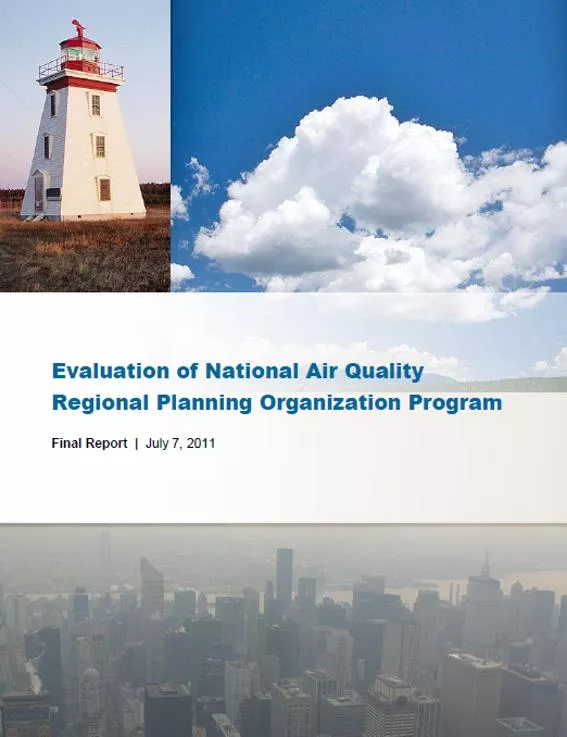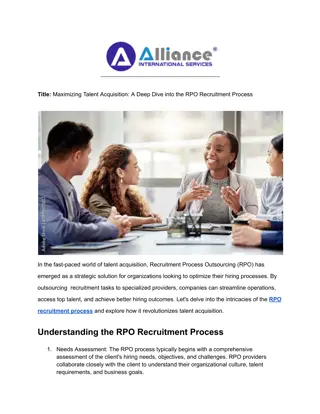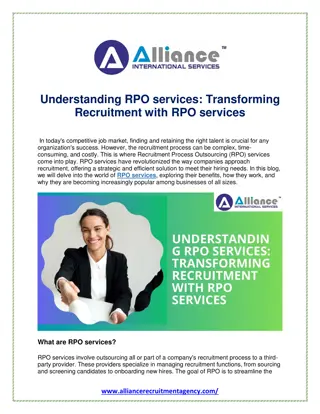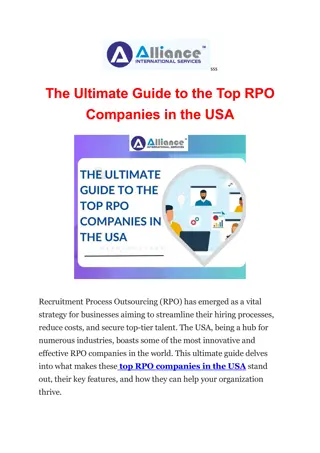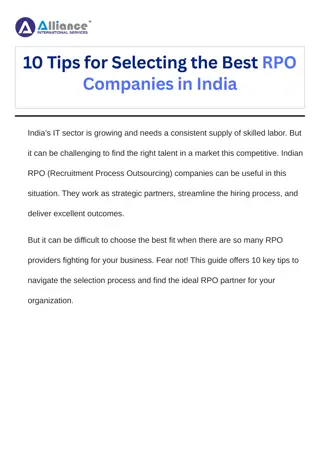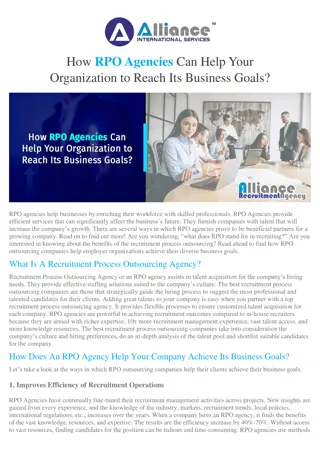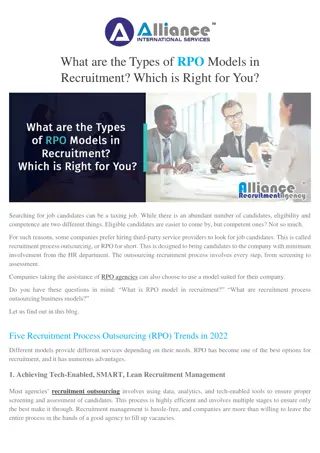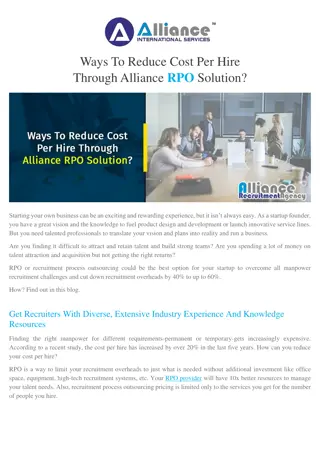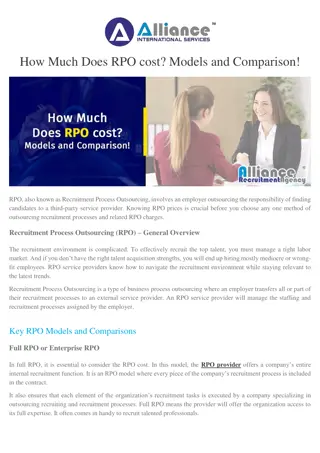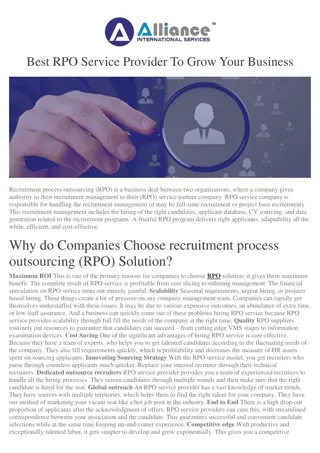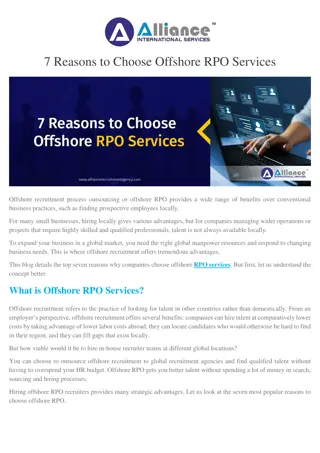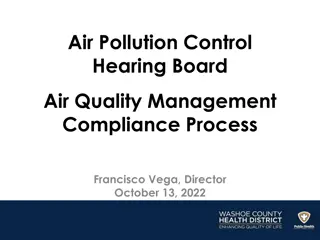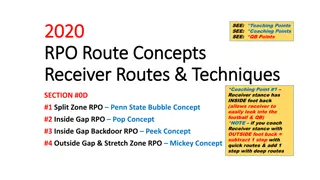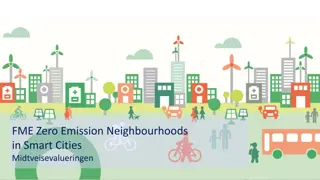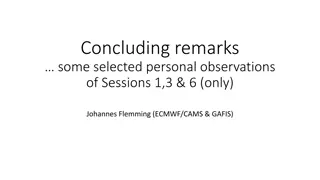Evaluation of RPO Program and Air Quality Management
In November 2011, the Office of Air and Radiation conducted an evaluation of the Regional Planning Organization (RPO) Program to assess past roles related to regional haze and inform future decisions on air quality planning. The evaluation focused on RPOs' roles in regional haze implementation plans, perceived value, technical support needs, funding trends, and more. The approach involved interviews with various stakeholders, data analysis, and drafting the final report in July 2011. The Western Regional Air Partnership was formed in response to EPA regulations, marking key milestones in air quality management.
Download Presentation

Please find below an Image/Link to download the presentation.
The content on the website is provided AS IS for your information and personal use only. It may not be sold, licensed, or shared on other websites without obtaining consent from the author.If you encounter any issues during the download, it is possible that the publisher has removed the file from their server.
You are allowed to download the files provided on this website for personal or commercial use, subject to the condition that they are used lawfully. All files are the property of their respective owners.
The content on the website is provided AS IS for your information and personal use only. It may not be sold, licensed, or shared on other websites without obtaining consent from the author.
E N D
Presentation Transcript
Office of Air and Radiation (OAR) November 17, 2011
RPO Program Evaluation EPA sponsored an evaluation of the Regional Planning Organization (RPO) Program Goals: Review past RPO roles and work related to regional haze Inform future EPA and partner decisions and work to address regional air quality planning and technical support needs
RPO Evaluation Focus and Scope RPOs roles in support of regional haze state and tribal implementation plan development and the broader U.S. air quality management system Perceived value of the RPOs and benefits of RPO support, as well as disadvantages and inefficiencies Perspectives on existing and future needs for regional air quality data management, modeling, and planning Design attributes and technical support needs of options for supporting future multi-jurisdictional air quality management Trends in RPO funding from various sources over time
RPO Evaluation Approach Evaluation conducted December 2010 July 2011 Contractor support from Ross & Associates and IEc Approach: Reviewed background documents Developed a logic model and evaluation questions based on input from EPA Conducted ~38 interviews (RPOs, MJOs, States, Tribes, EPA HQ and Regional Offices) Reviewed comments submitted by National Tribal Air Association Analyzed data and identified findings Selected sections reviewed by RPOs to ensure accuracy Final draft of report completed in July 2011
Western Regional Air Partnership Formed EPA Regional Haze Rule Regional Haze Rule Amendments Most EPA Funding for RPOs Ends Grand Canyon Visibility Transport Commission Report EPA Starts Funding Regional Planning Organizations (RPOs) State Implementation Plans (SIPs) Due/First SIP Submittals Central and Eastern RPOs Formed 1996 1997 1999 2000 2001 2005 2007 2008 States and Tribes Develop and Submit Implementation Plans (41 SIPs submitted as of 3/2011) RPOs Develop Regional Planning Framework (First 1-2 years) RPO Technical Support: Monitoring and Data Analysis | Emissions Inventories | Modeling of Control Strategies | Tool Development (4+ years and ongoing) Next SIPs due 2018
Regional-Level Policies : Regional Haze and CSAPR Visibility is more of priority in the West; CSAPR in the Midwest and East.
Findings RPOs met a clear need for regional technical support and collaborative forums for cost-effective air quality planning Existing RPO-MJO structure can inform future design - Use a combination of permanent staff, in-kind contributions, and targeted contracting that best meets regional needs - Focus on technical analyses and support rather than policy or research - Inclusion of tribes RPO scope should expand beyond regional haze to address multiple air pollutants (e.g. CSAPR, NAAQS) There is a need for national-scale coordination of regional technical work and alignment with EPA policies to leverage resources and prevent duplication of efforts. RPO s developed tools than can continue to facilitate regional air quality work in the future
Next Steps Final report was distributed to state & local agencies, tribes, RPO and MJO for comment Recognizing the increased burden on states and tribes, EPA has requested an $82 million increase in STAG funding for FY2012, but has been unsuccessful so far in securing additional funding EPA will follow up to the report with regional discussions
Next Steps EPA want to engage state & local governments, tribes and RPOs & MJOs in a conversation at a regional level on how to move forward on regional planning (tentatively January) o Explore whether RPO and MJO merger is an option in each region o Identify upcoming regional planning needs and shortfalls of technical support in states and tribes o Discuss ways to support tribal involvement in regional air planning, including possible EPA funding for tribal involvement o Identify ways to achieve efficiencies through joint EPA/RPO development of tools and data, aligning with EPA policy (i.e., SIPs) - EPA coordinates regional air planning activities and provides technical training at periodic meetings - Targeted support of regional tools used by multiple RPOs-MJOs
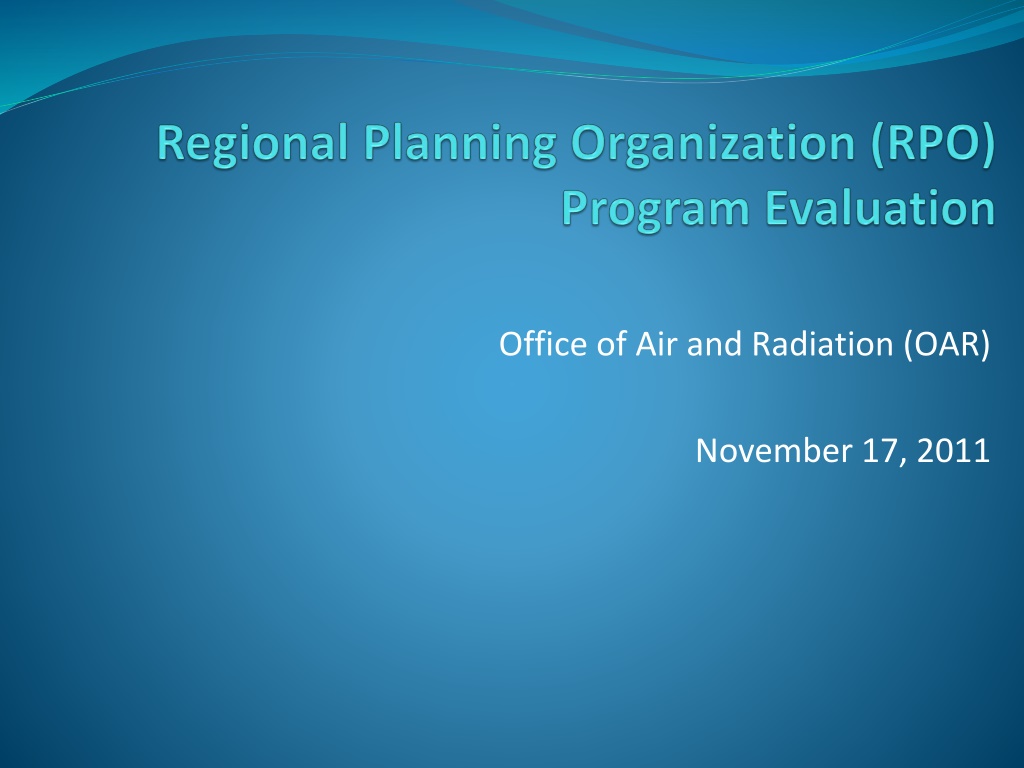





 undefined
undefined










